The Director’s Co-Pilot: Visualizing Your Entire Film with AI Before You Shoot a Single Frame
The Director’s Co-Pilot: Visualizing Your Entire Film with AI Before You Shoot a Single Frame
Let’s be honest. The most expensive part of filmmaking isn’t the gear; it’s the time. It’s the weeks spent on storyboards that don’t capture the mood, the concept art that misses the mark, the communication breakdowns between you, your DP, and your production designer. Is AI here to replace them? Absolutely not. But as of September 15, 2025, the creator who wields AI will outpace, out-visualize, and out-bid the one who doesn’t. Forget the dystopian fears. We’re about to hire AI as the most talented, tireless, and cost-effective pre-production studio in the world. Today, we turn your one-sentence film idea into a fully-realized cinematic mood board.
The Mission: From Script Slugline to Visual Bible
Our goal today is to go beyond just making ‘pretty pictures.’ We will architect a replicable workflow to define a film’s unique visual DNA and then use that DNA to generate consistent, on-demand concept art, keyframes, and character studies. This isn’t about replacing human artistry; it’s about giving that artistry a turbo-charged starting point. We’ll be using Midjourney, the current leader in high-fidelity image synthesis, but the principles here apply to other models like Stable Diffusion or DALL-E 3.
Phase 1: Forging the ‘Visual Lexicon’
Before you can storyboard a single scene, you need to define the world. What does it feel like? What is the quality of light? What textures dominate the frame? We will consolidate these ideas into a foundational prompt—our ‘Visual Lexicon’—that becomes the aesthetic cornerstone for the entire project. For our lab session, let’s imagine we’re developing a sci-fi neo-noir mystery.
The Prompting Studio: The Foundational Aesthetic
Go to your Midjourney interface (via Discord or their web Alpha). We are not just describing a scene; we are dictating the technology and artistry behind the camera.
Copy and paste this master prompt:
/imagine prompt: cinematic film still from a neo-noir mystery, rain-slicked street in a megacity circa 2099, holographic advertisements flicker on grime-covered chrome, moody volumetric lighting, shot on ARRI Alexa with Panavision anamorphic lens, deep shadows, teal and magenta palette –ar 16:9 –style raw –v 6.0
Hit enter. Within a minute, you have four high-fidelity concept frames that establish the soul of your film.
Strategist’s Log (Deconstructing the Prompt): Why does this work so well? We are giving the AI constraints rooted in real-world cinematography. ‘cinematic film still’ is infinitely better than ‘picture of’. We specify the mood with ‘neo-noir’ and ‘moody volumetric lighting’. The magic happens when we specify the gear: ‘shot on ARRI Alexa with Panavision anamorphic lens’ tells the AI precisely what kind of film grain, depth of field, and lens flare to emulate. –ar 16:9 sets the widescreen cinematic aspect ratio, and –style raw reduces Midjourney’s default ‘opinionated’ aesthetic for a more photographic look.
Phase 2: Populating Your World with Consistent Characters
Okay, we have a world. Now we need people in it. The biggest challenge in AI art for narrative projects has always been character consistency. Until now. Using Midjourney’s new Character Reference feature (–cref), we can ‘lock in’ a character’s face and features across countless scenes. First, generate your main character in a neutral setting. Once you have a face you love, you’ll get the image URL and use it as a reference.
The Prompting Studio: Casting Your Character
First, create the character. Right-click your chosen image and ‘Copy Link’ to get its URL.
Copy and paste this prompt:
/imagine prompt: character design sheet, a grizzled sci-fi detective, weary eyes, cybernetic chrome jaw, high-tech trench coat, neutral background –ar 16:9
Now, let’s place that *exact* character into the world we built. We will also use our first prompt’s output as a Style Reference (–sref) to ensure the lighting and color palette match perfectly.
Use the new URLs in this prompt:
/imagine prompt: cinematic film still, a close up of the detective looking at a clue on a datapad, his face illuminated by the screen –cref [URL of your character image] –sref [URL of your world image] –ar 16:9 –cw 100
Strategist’s Log (Deconstructing the Reference): This is the workflow revolution. –sref [URL] samples the ‘style’—color, composition, grain, mood—from the reference image. –cref [URL] samples the facial and physical features from the character image. The parameter –cw 100 (Character Weight) tells Midjourney to prioritize the character’s face as much as possible. By combining these, you achieve aesthetic and character consistency, a task that was nearly impossible just a year ago.
Phase 3: The Director’s Assembly
You are now an Art Director with an army of concept artists at your command. Your job shifts from pure creation to curation, iteration, and assembly. Generate your key shots: the establishing wide, the medium two-shot, the extreme close-up on a key prop. Use the Vary (Subtle) and Vary (Strong) buttons to explore slight variations in camera angle and lighting. Then, take these dozens of generated frames and assemble them into a comprehensive mood board using a tool like Figma, Milanote, or even just PowerPoint. This ‘visual bible’ becomes the undisputed source of truth for your entire crew, ensuring everyone is making the same film.
The Big Questions: Your AI Debrief
“Is this stealing the style of real DPs or concept artists?”
Think of it as the most advanced visual research tool ever created. When you type ‘in the style of Roger Deakins,’ you’re using a semantic shortcut for a complex visual language (e.g., strong silhouettes, motivated light sources, muted palettes). The ethical line is about intent and attribution. For internal pre-production, mood boarding, and communicating your vision to your team, it’s a revolutionary tool. You wouldn’t sell this as a ‘Roger Deakins original.’ You use it to say, ‘This is the feeling I want to achieve.’ It’s about synthesis, not plagiarism.
“How do I maintain a consistent look across hundreds of shots?”
The key is a systematic approach built on your Visual Lexicon. The `–sref` parameter is your best friend. Your workflow should be: 1. Create a ‘master’ style image for each key location or mood in your film (e.g., ‘The grimy alley,’ ‘The sterile corporate office,’ ‘The sun-drenched memory sequence’). 2. Save the URLs for these master images. 3. When generating any new shot, reference the appropriate style URL with `–sref`. Consistency is a product of your directorial system, not a single magic prompt. It requires organization, just like traditional filmmaking.
“What are the real-world copyright implications for my film?”
This is the billion-dollar question, and the legal landscape is still a fresh pour of concrete. As of today, the consensus is this: Under Midjourney’s ToS, you (as a paid subscriber) own the assets you create. However, their use in a final commercial product is a gray area. The professional, risk-averse approach is to treat AI output as hyper-detailed concept art or a plate for VFX work. It’s the blueprint for a human matte painter, the lighting guide for your DP, the storyboard for your editor. It’s not the final pixel on screen… yet. For any major commercial release, consulting with an entertainment lawyer is non-negotiable.
Your Creative Sandbox Assignment
Your mission is to storyboard a three-shot sequence for a film concept you’re passionate about. It could be a fantasy epic, a grounded drama, or a slapstick comedy. The AI doesn’t care.
- Shot 1 (The Master): Write a ‘Visual Lexicon’ prompt for an establishing wide shot of your main location. This is your anchor.
- Shot 2 (The Entrance): Write a prompt for a medium shot of a character entering the scene. Use the URL from Shot 1 in the –sref parameter to lock in the style.
- Shot 3 (The Detail): Write a prompt for a close-up of an object the character holds or an expression on their face. Again, use –sref pointing to Shot 1.
In less than 10 minutes, you’ll have a visually coherent micro-scene. This is the new speed of creativity.
Your AI Integration Plan This Week
- Monday: Dream up a film idea. Spend 20 minutes creating just the ‘Visual Lexicon’—the one master prompt that defines its soul. Generate 5-10 variations.
- Wednesday: Take the best image from Monday. Using –cref and –sref, generate a cast of 3 distinct characters that fit that world.
- Friday: Write a 5-beat story outline. Generate one keyframe for each beat, ensuring visual consistency using your master style reference.
- Sunday: Arrange your keyframes into a simple animatic (you can just use a slideshow) and show it to someone. Watch their reaction. You just pitched a film without a single crew member. Welcome to the future of pre-production.





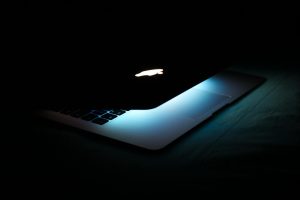
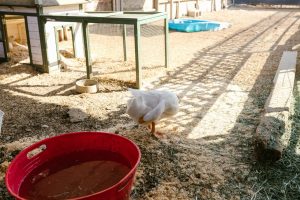
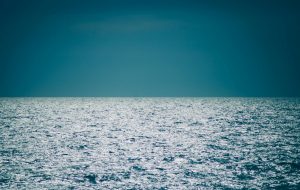

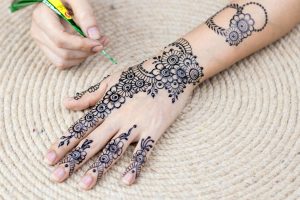
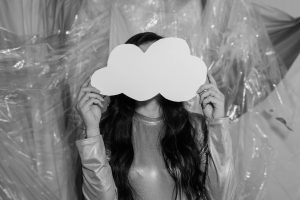




Post Comment
You must be logged in to post a comment.